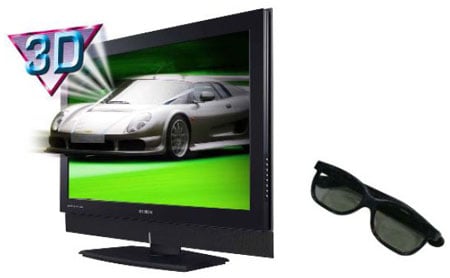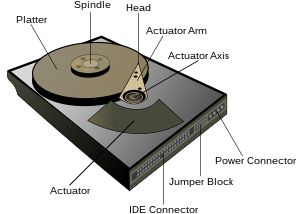
So, with SIGGRAPH '09 bearing down on us, I though I'd share my thoughts about some of the highlights we might expect to see this year - and a few of the key items on my "must do" list for the Big Show.
Smaller Show This Year (but that's not necessarily a bad thing)
In keeping with the recent trend of down-sized conventions, this year's SIGGRAPH will be smaller than recent years in both footprint and the number of people in attendance.
On the surface, this might seem like a drag. Fewer people, exhibitors and events would lead some to think that the "spectacle" that is SIGGRAPH may not have quite the euphoric, all-encompassing scale of years-past.
However, there are plenty of reasons that a smaller SIGGRAPH might still make for a fullfiling and valuable experience.
Still present will be the amazing
computer animation festival, the fun
competitions, the cool
live music, -and of course, the parties. And there will still be
plenty of cool technology. I promise.
And with
less people in attendance, you'll likely have a better chance getting into the more popular conference sessions and discussions. This is a good thing, as SIGGRAPH is possibly the very best place to receive knowledge from recognized authorities and subject matter experts on a wide range of CG-specific topics.
Incidentally, the number of listed informal "
Birds of a Feather" meetings scheduled this year seems at least as diverse and numerous as last year. The BOF meetings are very intimate and provide rare opportunities to network with people in your specific line of work, and to glean little tidbits of info that can help you do your job even better than you already do it. This is networking on steroids.
While there are definitely fewer vendors with booths on the expo floor, I expect that virtually all of the companies developing and selling technology of any relevance or importance in our industry will still be there. If not with their own booth, they will be there "partnering" with other companies -sharing floorspace, and meeting in private with customers and business partners alike. If you need face time with somebody from a vendor that you do business with - or who's tools you use in your work, the chances are good that you'll be able to track down the appropriate person(s). Look for logos on shirts -or better yet, call to arrange a meeting with a company rep before you get out to New Orleans. These guys are typically very happy to talk about any specific "issues" you might be having with their product, and helpful in answering questions about the companies' newest stuff.
Attending SIGGRAPH provides stellar opportunities to experience emerging technologies and hear about academic/industrial research projects that will shape the future of the computer graphics world. With less people in attendance, those of us that
do show up hopefully won't have to wait in line as long to watch demos, or to get "hands on" time with demo systems and technology prototypes. I personally love to see the new stuff up close -to me it's easily the most interesting and inspiring part of SIGGRAPH. Every year I make
the Emerging Technologies showcase one of the primary digs on my SIGGRAPH treasure map -and this year is no exception.
For job-seekers, fewer people in attendance should mean an easier time putting your resume and/or demo reel in front of the right people. Fewer applicants may mean you'll have a better chance of "standing out from the crowd". I've not really spent much time there myself, but I do know people who have gotten jobs at the SIGGRAPH
job fair in years past.
There's a certain satisfaction that comes from knowing that you managed to do/see or all of the things you were really interested in checking out. Unfortunately, this feat just isn't humanly possible for most of us when attending "monster" conventions like NAB*. So the idea that a smaller SIGGRAPH means we might get to "see" more stuff is perhaps another compelling reason to go even though it's smaller than years-past.
*NAB shows seem to be really down-sized lately as well, doesn't it?
HD is old news. 2K was so 2006... Get ready for 4K, 8K, 16K, and beyond!
Continuing advances in the performance of CPUs, storage technologies and software tool sets expose artists and facilities to recently unattainable (or unaffordable) capabilities for working on ultra-high-res projects. And the timing is just about perfect -as this coincides quite nicely with emerging advances in digital cinema cameras and display technologies that we'll (and you'll) be working with for upcoming projects.
With the proliferation of 2K and 4K camera systems (a particular color comes to mind), there's a ton of nicely shot, ultra-high-res content floating around. And while a (shrinking) majority of films for wide release are still shot on film, more and more VFX sequences (and even entire films) being made are leveraging a 4K "DI" (digital intermediate) process for production and post-production pipelines.
Expect to see loads of 4K eye-candy and worklflow demos everywhere you look.
There are rumors that some 8K (and possibly even a 16K) display devices will be up and running. Now I don't know about you, but I'm wondering where anybody gets 16K live action plates... In any case, the pixel wars continue to rage -and will be evident at this year's show.
I expect that we'll see many new software tools designed for "gigapixel" image manipulation and photo stitching as well.
3D/stereographic - it's here to stay.
Many of the same technological advances that are enabling the 4K+ boom, are providing the technological horsepower needed to produce 3D "stereographic" films and other types of material. No longer a gimmick, the demand for "3D" content seems to be catching up to recently refined technologies for producing, post-producing and displaying stereographic content.
After several years of widespread argument on the matter, many experts and industry analysts now agree that we are beginning to reach..ok, i'll say it - a "critical mass" - in the intertia of a blossoming new industry for 3D/stereo content.
I expect to see a ton of both "active" and "passive" headware (glasses)-based 3D viewing technologies being incoporated into applications for nearly every vertical market and niche.
*(Passive display technologies that don't require some type of headware or glasses have proved elusive, and there are currently no feasible 3D glass-free viewing technologies being commercialized that I know of. I doubt we'll see any companies advancing this technology in any meaninful ways at the show)
I also expect to substantial showings from companies demonstrating new realtime, interactive 3D implementations for gaming, industrial/product design, and "location-based" entertainment such as Disney rides and other large semi-permanent installations.
Augmented Reality
A relatively new type of hybrid technology that's likely going to make some noise at this year's SIGGRAPH is something called "augmented reality".
As defined by wikipedia,
augmented reality (AR) is "a field of
computer research which deals with the combination of real-world and computer-generated data (
virtual reality), where computer graphics objects are blended into real
footage in
real time. The term is believed to have been coined in 1990 by Thomas Caudell, an employee of
Boeing at the time
[1]."
(the WIKI author figured out how to say it much more elegantly that I have been able to...)
Research has been going on in this area for quite some time, and an AR-enabled smartphone app was recently released for consumers. This new hybrid application of real and virtual imagery is exposing completely new mechanisms of human-computer interaction for everything from industrial design, to architectural visualization, to home entertainment. And very likely, everything in between.
Keep an eye out for "AR" on both the expo floor as well as the emerging technologies area.
Realtime/interactive Raytracing
For those of you who have been paying attention, the development of "RTRT" (realtime raytracing) has recently seen a ton of acvtivity.
After laboured and slow advances for nearly a decade, hardware-based 3D raytracing is finally reaching a certain point of maturity.
I count over a dozen "interactive raytracing" or "realtime raytracing" products now on the market or in development. Not all these tools are designed for the same purposes, but all have one thing in common - optimized processing that uses accurate lighting models to produce a quick, 'photoreal" image.
Some of these new engines use "brute-force" floating-point processing of CPUs. Others are using GPUs to do the math required. And still others are using hybrid approaches that combine both types of processing to provide more flexibility in using lights, shaders and implementing effects such as motion blur and depth of focus.
I expect that attendees of this year's SIGGRAPH will probably see all sorts of nifty interactive raytracing technologies that are fundamentally changing the way 3D work gets rendered.
New Orleans- The Perfect Venue?
In 2000, SIGGRAPH attendance was about 26,000. There were about 300 companies exhibiting their goods.
According to my sources, this year's attendance is expected to be about the same -and the number of exhibitors slightly less.
One of my most memorable SIGGRAPH experiences was in New Orleans in 2000.
The exquisite melange of people, technology, art, food, music and culture -mixed with a healthy splash of rum, made for a unique and memorable experience. My recollection of the 2000 event, although blurry (for multiple reasons), is that the city provided a perfect backdrop for the size and scope of activities and people that come to SIGGRAPH.
My expectation is that this year will be no different in those regards.
The global CG community is as culturally diverse as the technology and creativity born from it. What better venue for SIGGRAPH than New Orleans -a city that celebrates human diversity and creativity like no other place on earth.
See you in New Orleans!
 Sony's decision to throw its weight behind the technology will be an important boost for the 3D industry, which has so far focused mainly on cinemas. British Sky Broadcasting has said it would introduce a 3D satellite channel in the UK next year, but it had been unclear whether there would be equipment available with which to view it.
Sony's decision to throw its weight behind the technology will be an important boost for the 3D industry, which has so far focused mainly on cinemas. British Sky Broadcasting has said it would introduce a 3D satellite channel in the UK next year, but it had been unclear whether there would be equipment available with which to view it.










